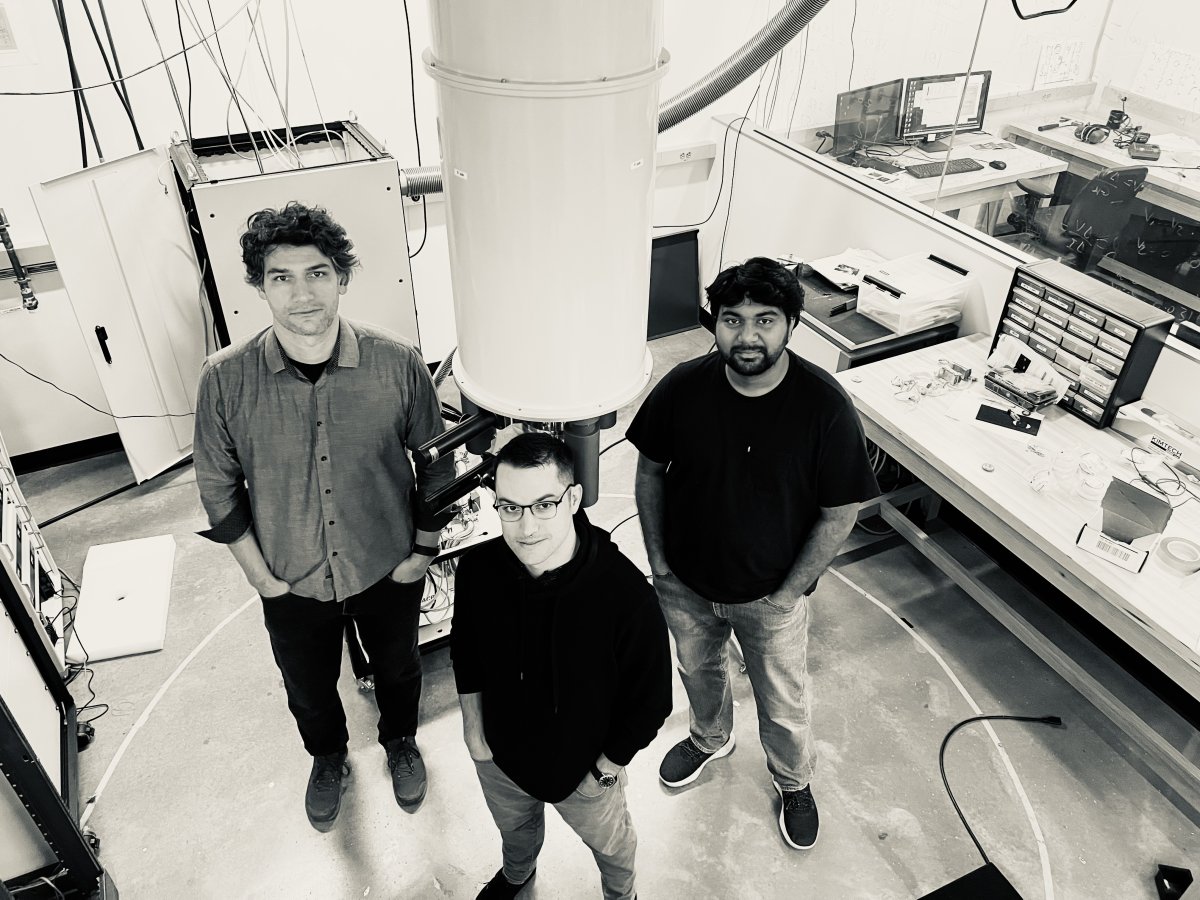Pribiag group creates first few-mode multi-terminal Josephson junction

Professor Vlad Pribiag from the School of Physics and Astronomy led a group effort that has experimentally realized a long-theorized few-mode multi-terminal Josephson junction.
The devices, which are comprised of three superconducting electrodes coupled through a two-dimensional semiconductor, were devised as a possible platform to investigate so-called higher dimensional quantum states and quantum states that are protected by their topology. A central priority in the world of quantum computing is to create tunable quantum states that are less susceptible to noise from their environment. As such, topological states are of interest for their proposed robustness to conventional forms of quantum noise. For years, physicists have been trying to create multi-terminal Josephson junctions which only have a few modes, or channels, through which electrons can move within the device, in order to observe such phenomena. Until now, no group has been able to successfully build and control a few-mode multi-terminal Josephson junction.
In describing the few modes, Pribiag uses a metaphor of trying to carry on a conversation in a crowded room. “If you have a few people trying to talk across a room in which hundreds or thousands of conversations are happening by shouting across the crowded room, that is like a conventional device, versus each of them having a direct phone line to each other. The latter scenario illustrates the few-mode regime of our devices.”
Postdoctoral Researcher Gino Graziano and Research Assistant Mohit Gupta are co-lead authors on a paper in Nature Communications that describes how the group built these devices using multiple tunable gates to control the flow of electrons and the number of channels. Graziano, who was a student in the School when Professor Pribiag began working on the project in 2015, built the group’s first multi-terminal device, which used a single gate to control the electronic channels. “We did not access the few-mode regime in the original device. We established coarse control, but still had thousands of residual modes,” Graziano said, “It was clear the next generation would need to include multiple independent gates to demonstrate sufficient control.” Gupta came on board to the project, and helped to build the next generation of multi-terminal devices, which are fabricated on a layered nanomaterial provided to the group by collaborator and former University of Minnesota Professor, Chris Palmstrøm, now at University of California, Santa Barbara. “We realized that a single gate could not make the right geometry, we found that multiple gates were necessary to access the topologically protected quantum states,” Gupta said.
A big part of the challenge was technological, since the devices contain features down to 50 nanometers in width, have three superconducting terminals, and multiple control gates with nanoscale separations. “We made the three-terminal device, and fit three gates into a two micron space [in figure one], then we tried a four-gate structure. We tried as many as six [gates], but settled on three and four independent gates for our few-mode devices,” Gupta said.
“What we did was combine all the proposed necessary elements to achieve topological states, we didn’t yet start searching for these states, that is next, but we have set the groundwork and built the platform for it,” Pribiag said. “The group plans to use quantum tunneling to probe the behavior of the few modes, and to try to observe the topological and multi-dimensional aspect.”